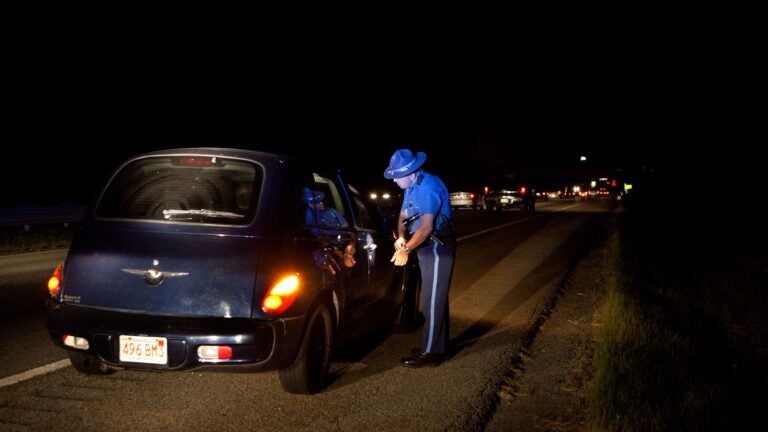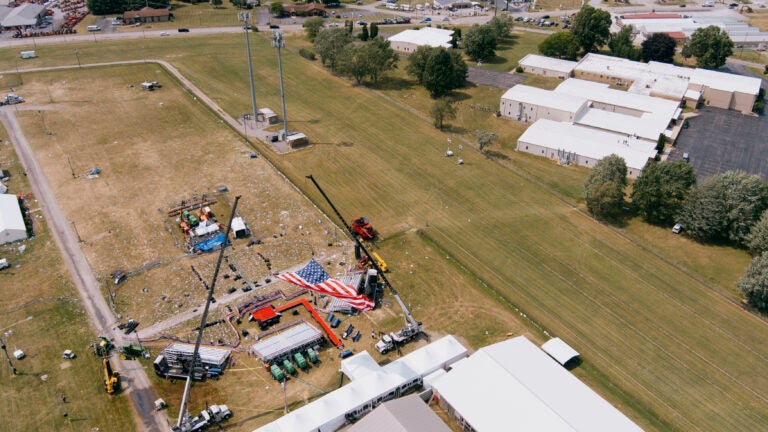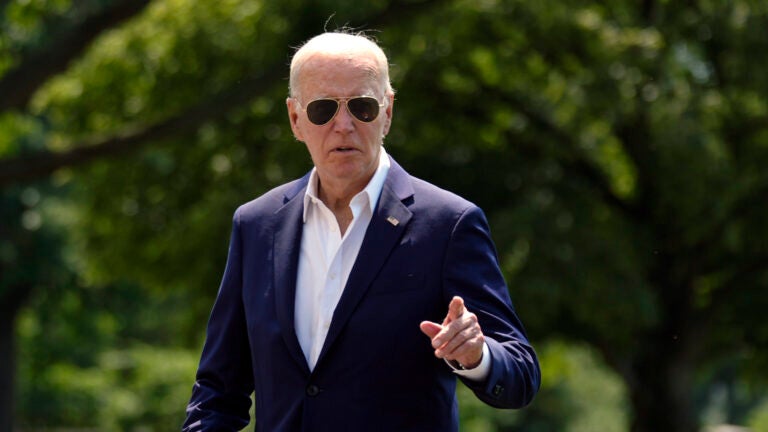Newsletter Signup
Stay up to date on all the latest news from Boston.com

Black and Hispanic drivers in Massachusetts were less likely to get off with a warning than white motorists and more likely to be arrested or receive criminal citations during traffic stops in 2021 and 2022, a new state report found.
The report, released Tuesday, includes data from nearly 1.3 million traffic stops conducted during that two-year period, plus analysis from researchers at Worcester State and Salem State universities.
While the report found what appears to be “a statistically significant relationship” between the driver’s race or ethnicity and the outcome of the traffic stop, the researchers cautioned that the finding “does not mean that the race/ethnicity of the stopped driver caused the specific stop outcome.”
They added: “There is a lot we do not know about the circumstances of the stop that could potentially influence its outcome(s).”

For example, the report notes that the data only includes traffic stops that resulted in a written warning or citation, excluding stops that ended with a verbal warning. Likewise, the data does not indicate whether the stop was made at a police officer’s discretion or triggered by a warrant or dispatched call.
Both years, nearly two-thirds of all drivers stopped were white and just over 14% were Black, according to the report. Hispanic drivers accounted for 14.5% of traffic stops in 2021 and 15.2% in 2022. Other races — including Asian, Asian Pacific, American Indian, Middle Eastern, or Pacific Islander — made up 4.6% of stops in 2021 and 5.2% in 2022.
By comparison, recent census data puts Massachusetts’ population at 69.6% non-Hispanic white, 9.5% Black, 13.1% Hispanic or Latino, and 7.7% Asian, with the remaining residents including American Indians, multiracial individuals, and Native Hawaiians and other Pacific Islanders.
In both 2021 and 2022, Hispanic and Black drivers were least likely to receive a warning and most likely to be arrested following a traffic stop. Similarly, non-white motorists were more likely to have their cars picked apart in a “discretionary, non-inventory” search both years, according to the report.
The researchers also used an analytical tool called the “Veil of Darkness,” which is based on the belief that, “if law enforcement officers are profiling motorists, they are better able to do so during the daylight hours when race/ethnicity is more visible and easily observed,” the report explains.
Overall, non-white drivers were 36% less likely to be pulled over during the day than at night, according to the report. However, using data from traffic stops during the so-called “Intertwilight Period,” when lighting conditions fluctuate between seasons, the “Veil of Darkness” analysis highlighted several local departments with higher odds of stopping a non-white driver during the day than at night.
The researchers identified potential racial disparities in 2021 data from the Southwick Police Department, Westwood Police Department, and Massachusetts State Police Troop C-4 barracks in Leominster. In 2022, the category included police departments in Hanover, Ludlow, and Wrentham, as well as the Boston Police Department’s Hyde Park district and State Police Troop C-3 in Brookfield.
However, researchers were careful to note that “the analyses contained in this report cannot be used as either absolute proof that a law enforcement agency engaged in racially biased conduct or vice versa, that it did not.”
In other words, they explained, “disparities do not equal discrimination or profiling. Instead, they serve as the starting point for reflection and further learning and discussion.”
The report was published by the Executive Office of Public Safety and Security under the 2019 Hands-Free Law, which bars motorists from using their cellphones while driving.
“The hands-free law established a research mandate to gain data-driven insight into police traffic stops and determine whether any patterns indicate racial disparities,” Public Safety and Security Secretary Terrence Reidy explained in a statement. “The study aims to learn more about potential patterns, inform stakeholder discussions, and advance the impartial, equitable, and just enforcement of Massachusetts traffic laws.”
The Executive Office of Public Safety and Security will now consult Attorney General Andrea Campbell’s office to determine next steps, which could include additional data collection or training for certain law enforcement agencies, EOPSS said in a press release. In late March, the department will also host a series of public hearings to share the report’s findings and gather feedback.
As researchers noted in the report, the study’s goal is to eventually learn more about potential racial disparities in traffic stops “for the purpose of understanding the causes of these disparities and building or maintaining community trust, ultimately making us all safer.”
Stay up to date on all the latest news from Boston.com





Stay up to date with everything Boston. Receive the latest news and breaking updates, straight from our newsroom to your inbox.
Conversation
This discussion has ended. Please join elsewhere on Boston.com